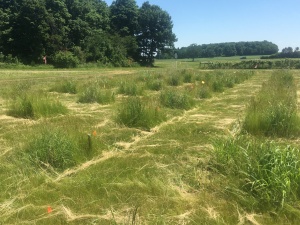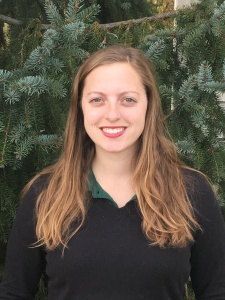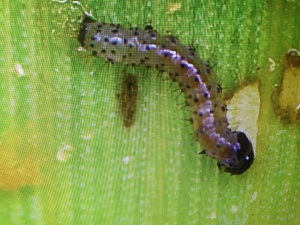
Switchgrass (Panicum virgatum L.) is a native North American prairie grass that is commonly planted in prairie restorations. It also has potential to serve as a feedstock for cellulosic bioenergy.

A research team led by graduate student Marissa Schuh (MSU Entomology, Landis Lab, now with MSU Extension) found that a common generalist herbivore (fall armyworm, Spodoptera frugiperda JE Smith (Lepidoptera: Noctuidae)) consumed different amounts of tissue from lowland and upland ecotypes of switchgrass. The differences in herbivory were associated with ecotypic differences in leaf density as measured by specific leaf area.

Lowland switchgrass ecotypes generally had lower specific leaf area (their leaf tissue was denser) and lost less leaf area to fall armyworm in no-choice feeding tests. Late-instar larvae that fed on lowland ecotypes developed more slowly and achieved lower pupal weights. These results demonstrate the importance of considering variation in herbivore defense when assessing the performance and fitness of native grass ecotypes.
To learn more, please see Schuh, M. K., Bahlai, C. A., Malmstrom, C. M. & Landis, D. A. Effect of Switchgrass Ecotype and Cultivar on Establishment, Feeding, and Development of Fall Armyworm (Lepidoptera: Noctuidae). Journal of Economic Entomology, doi:10.1093/jee/toy292 (2018).
https://academic.oup.com/jee/advance-article/doi/10.1093/jee/toy292/5142286